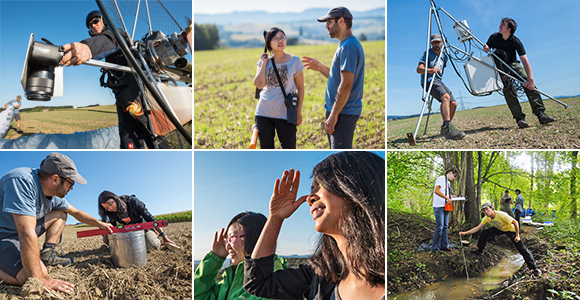Collaborations Transcending Disciplinary Boundaries
One of the hallmarks of the HOAL observatory is its ability for fostering cooperation across the disciplinary boundaries which allows doctoral students to address more complex science questions than is possible through individual dissertations. The main strategy for achieving this consists of organising the research through joint groups and joint research questions.
A number of doctoral students currently address, e.g., research questions related to space time patterns of flow paths and evaporation. Atmospheric scientist Patrick Hogan is investigating the soil moisture and land use controls on spatial evaporation patterns within the catchment. One specific hypothesis Patrick Hogan is testing is that the relative importance of soil moisture controls exceeds that of topographic controls at all times of the year. As evaporation is an important flux in the HOAL it will directly affect soil moisture (of interest to remote sensing specialist Mariette Vreugdenhil) and indirectly affect the flow paths (of interest to hydrogeologist Michael Exner-Kittridge who deals with nutrient fluxes).
Structural engineer Abbas Kazemi Amiri is taking advantage of the eddy correlation systems and conducts measurements of the dynamic wind loading of the mast structure to understand the interactions of water resource structures with wind, and specifically the role of fatigue. Conversely, Patrick Hogan can make use of the expertise and research progress of other students by testing the spatial distribution of evaporation obtained by his eddy-correlation instrumentation against observed runoff volumes in different parts of the catchment.
Hydrologist Rasmiaditya Silasari’s thesis quantifies the spatial organization of the flow patterns. One specific hypothesis she is testing is that spatial connectivity is a major determinant of the flow rates and flow dynamics. The numerical hydrological simulations she conducts for testing her hypotheses are directly relevant to Mariette Vreugdenhil for interpreting spatial soil moisture.





